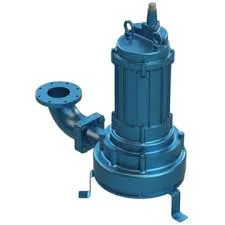Nepali
- Afrikaans
- Albanian
- Amharic
- Arabic
- Armenian
- Azerbaijani
- Basque
- Belarusian
- Bengali
- Bosnian
- Bulgarian
- Catalan
- Cebuano
- Corsican
- Croatian
- Czech
- Danish
- Dutch
- English
- Esperanto
- Estonian
- Finnish
- French
- Frisian
- Galician
- Georgian
- German
- Greek
- Gujarati
- Haitian Creole
- hausa
- hawaiian
- Hebrew
- Hindi
- Miao
- Hungarian
- Icelandic
- igbo
- Indonesian
- irish
- Italian
- Japanese
- Javanese
- Kannada
- kazakh
- Khmer
- Rwandese
- Korean
- Kurdish
- Kyrgyz
- Lao
- Latin
- Latvian
- Lithuanian
- Luxembourgish
- Macedonian
- Malgashi
- Malay
- Malayalam
- Maltese
- Maori
- Marathi
- Mongolian
- Myanmar
- Nepali
- Norwegian
- Norwegian
- Occitan
- Pashto
- Persian
- Polish
- Portuguese
- Punjabi
- Romanian
- Russian
- Samoan
- Scottish Gaelic
- Serbian
- Sesotho
- Shona
- Sindhi
- Sinhala
- Slovak
- Slovenian
- Somali
- Spanish
- Sundanese
- Swahili
- Swedish
- Tagalog
- Tajik
- Tamil
- Tatar
- Telugu
- Thai
- Turkish
- Turkmen
- Ukrainian
- Urdu
- Uighur
- Uzbek
- Vietnamese
- Welsh
- Bantu
- Yiddish
- Yoruba
- Zulu
Telephone: +86 13120555503
Email: frank@cypump.com
डिस . 14, 2024 00:38 Back to list
Choosing the Right Sewage Pump System for Your Basement Needs and Efficiency
Understanding Basement Sewage Pump Systems
When it comes to maintaining a home, ensuring proper wastewater management is paramount, especially for properties with basements. A basement sewage pump system is designed to protect against flooding and sewage backups, providing a crucial service for homes situated below the sewer line. Understanding how these systems work, their components, and their maintenance can help homeowners make informed decisions.
A basement sewage pump system typically comprises several key components the sewage basin, the sewage pump, and the discharge pipes. The sewage basin (also called the sump pit) collects wastewater from various sources in the basement, such as sinks, showers, and washing machines. When wastewater accumulates in the basin to a certain level, the sewage pump is activated.
The sewage pump itself is a submersible pump, which means it operates while submerged in the sewage basin. Its primary function is to lift the wastewater out of the basin and into the main sewer line or a septic tank. Most sewage pumps are equipped with float switches that automatically turn the pump on and off in response to the water level in the basin, ensuring efficient operation.
One critical aspect of a sewage pump system is its ability to handle solid waste. Unlike standard sump pumps, which manage clear water, sewage pumps are specially designed to move wastewater that contains solids, such as toilet paper and human waste. Therefore, they typically have larger openings to prevent blockages and can handle solids of varying sizes.
basement sewage pump system

Proper installation of a basement sewage pump system is vital for its effectiveness. It is essential to position the sewage basin at the lowest point of the basement to allow gravity to guide wastewater into the basin efficiently. Additionally, the discharge pipe must be appropriately installed to ensure that wastewater is directed away from the house, preventing potential contamination or odor issues.
Maintenance of the sewage pump system is crucial to prevent failures that could lead to messy and costly backups. Homeowners should regularly check the pump for signs of wear, ensure that the float switch is functioning properly, and clear any debris from the basin. Routine maintenance may also involve cleaning the sewage basin and inspecting the discharge pipes for clogs or leaks.
In some cases, homeowners may consider installing a backup sewage pump system. This additional pump can provide peace of mind, especially in areas prone to heavy rainfall or flooding. A backup system typically operates on a battery or generator, ensuring that wastewater is effectively managed even during power outages.
In summary, a basement sewage pump system plays a vital role in maintaining a safe and sanitary home environment. By understanding its components, ensuring proper installation, and committing to regular maintenance, homeowners can effectively manage their basement wastewater. This proactive approach can significantly reduce the risk of sewage backups, protecting both the property and the health of its occupants. With modern technology, homeowners can enjoy reliable, efficient sewage management, making life a little easier and homes a lot safer.
-
Heavy-Duty Mining Sludge Pumps - Wear-Resistant Slurry Handling
NewsAug.02,2025
-
Horizontal Split Case Pump with GPT-4 Turbo | High Efficiency
NewsAug.01,2025
-
ISG Series Pipeline Pump - Chi Yuan Pumps | High Efficiency, Durable Design
NewsAug.01,2025
-
Advanced Flue Gas Desulfurization Pump with GPT-4 Turbo | Durable & Efficient
NewsJul.31,2025
-
ISG Series Vertical Pipeline Pump - Chi Yuan Pumps | Advanced Hydraulic Design&Durable Construction
NewsJul.31,2025
-
ISG Series Vertical Pipeline Pump - Chi Yuan Pumps | Energy Efficient & Low Noise
NewsJul.31,2025










